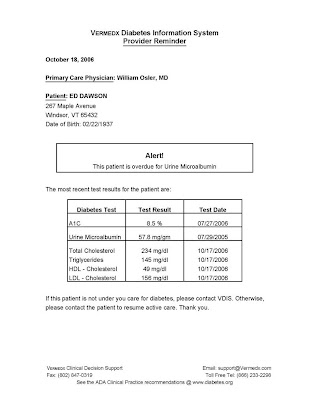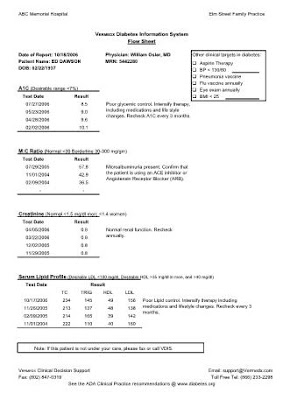So, we programmed the VDIS to scan the database of results looking for patients who are overdue for one of the tests. When it finds one, it produces a simple report to the practice that says, basically, "Hey! This patient is getting lost! Get a hold of them and bring them back under care!"

A full size sample of the report can be seen here.
Practice Reminders arrive at the practice 30 days after the test was due. If the practice has a protocol or standing orders, the office staff can call the patient, order the lab tests, and schedule an office visit for a few days after the tests. At the visit, the provider can review the results with the patient face-to-face and together they can make a plan based on current information. This is often much better than getting the tests after the visit and writing a letter or playing phone tag.
Practice Reminders are a Value Added service that a Health Information Exchange can provide at low cost. Stay tuned for some other examples of ways to use HIE to improve care.
Thanks,
Ben
